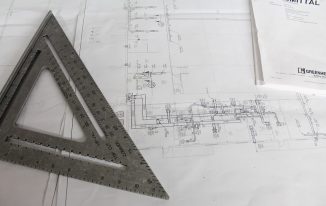Read this article to understand the topic of (i) Meaning of Performance Appraisal, (ii) Objectives of Performance Appraisal, (iii) Importance of Performance Appraisal, (iv) Methods of Performance Appraisal and (v) Process of Performance Appraisal…
Meaning of Performance Appraisal
What is Performance Appraisal??
Appraisal means estimation about the worth of the person or an object and performance appraisal means the evaluation of workers’ worth in terms of organizational performance.
“Performance appraisal is the process of explaining expectations for worker’s performance; recording, evaluating, and, measuring worker performance relative to those expectations; and providing feedback to the employee.”
Objectives of Performance Appraisal

The objectives of performance appraisal system include various points like:
1. It depends on the “Merit Rating”. Merit rating means what the worker is. Performance appraisal means what the worker does. Appraisal records what is done by the worker. Merit rating provides information about “personality”, “potential”, and “promise” but appraisal tells about performance.
2. An appraisal is a type of judgment which requires definite standards. Actual performance is compared with goals and standards. Such standards should be worked out by companies and conveyed to all the workers, otherwise, judgment will be one way only.
3. To judge means to apply a set or bunch of values. Value judgments without sharp, clear, and public standards are arbitrary and irrational. Such judgments will demotivate the superior and subordinates.
4. Standards examine what work was assigned, what resources were allowed and what promises were given regarding rewards or salary. They provide a measure of evaluation.
5. It also gives feedback to workers about their performance. Feedback helps in overcoming problems in the work, promoting performance and relating his work to organizational objectives.
6. It is a kind of human tendency to recall only the latest achievements or events. Similarly, only the latest failures are remembered. Appraisals should cover some particular periods where a worker was involved fully, or even in his absence, how the junior was doing, to what extent there was the transfer of authority and as well as responsibility.
7. It helps in innovating personal improvement plans to reduce the weaknesses and problems of employees or workers on the job and provide training facilities to strengthen their capabilities.
8. It is an integral part of a system of managing. It is a very essential part of the whole system of managing and in the sub-system of managerial staffing.
Importance of performance appraisal

The importance of performance appraisal system in an organization includes various points like:
1. To place the right man on the right job:
Every position has a job description or design. There should be a man to fit the position. There must be the right person for the right job. This is simply possible by an appraisal method. What will happen if the company gets a wrong man?
The answer is if an individual does not get a job by an organization according to his knowledge then he will not be able to do his job well and as well as, he will lose his motivation towards that work and will quit very soon.
2. To know the quality of managers:
Every organization has its high goals and objectives for which it needs competent managers. When a worker is recruited, he appears to be very enthusiastic and promising. He is called a “Potential candidate”. This potential has to be converted into better performance.
If an individual is theoretically strong but weak in execution, the organization may not get a perfect manager. Hence, the supreme advantage of appraisals is that the organization gets to know the level of competence of managers. It enables the efficiency power of a manager.
3. To give feedback to employees:
An appraisal is called a very good tool for communication. When senior managers talk to employees about their accomplishments and failures, they take help of appraisals. In appraisals, there are objective goals and facts are set jointly.
Thus, it becomes easy for superiors to convince employees and give them clear feedback on inputs and outputs.
4. To re-structure the organization:
The primary advantage of appraisals is to know the insider merit point of every employee. With the help of the appraisal system, it is possible to rotate executives in a scientific way. The benefit of job rotation is that the organization gets a good or honest general manager.
Every organization has a chart of managers. There are slots in the organization which should be filled by the most important or intelligent person. When this is known, it would be possible to reform or structure the organization.
5. To recommend rewards or transfers:
Appraisals are effective when they are associated with the reward system. Compensation for achievement is the most powerful motivating weapon. One of the strong motivating factors is promotion. There can be cash rewards and increments.
There can also be transfers of employees from one place to another place. Such decisions need sufficient cases and data. This is possible through appraisals.
Methods of performance appraisal

The types of methods of performance appraisal categorized into two basic parts:
- Performance results-oriented methods
- Employee behaviour-oriented methods
1. Performance results-oriented methods:
These methods analyze actual performance of workers and bring it in conformity with the pre-determined standards.
(i) Graphic Scales:
These scales are a list of a number of rating factors, including general characteristics and behaviors, on which an employee is rated by the supervisor.
(ii) Behaviourally anchored rating scales:
This method is an extension of a graphic scale method. These rating scales are used in situations where the number of workers is performing the same work and a high degree of accuracy is required in their job behaviours.
(iii) Essay evaluation:
This is an unstructured mode of performance appraisal where grades are not assigned to performance parameters. As the workers perform their jobs, the raters or evaluators keep track of the performance and note their good and bad job attributes like quality and quantity of performance, employees’ strengths and weaknesses, their potential to work, and so on.
2. Employee behaviour-oriented methods:
These methods are also called comparative methods of evaluation. They compare the performance of workers against each other and rank them accordingly.
(i) Straight ranking:
This is the primary method of ranking where employees are rated as rank like 1, 2, 3, 4, and 5.
(ii) Alternation ranking:
Rather than ranking the workers in ascending order of performance, the raters first choose the best and give him rank 1, then the bad and rank him 5, and so on.
(iii) Paired comparison:
In this type of ranking, each individual is compared with others in the group on the basis of particular traits like 1 compared with 2, and 2 compared with 3, and 3 compared with 4, and so on.
(iv) Forced-choice method:
This type of rating involves appraising the performance of workers by choosing between two or more statements that describe the features of workers. The statement may be positive or negative. They are formally related to each other but the rater has to choose the best statement that describes the employee.
Process of Performance Appraisal Steps:
This process consists of the following steps:
1. Goal Setting:
Goals or objectives are set for appraising performance which becomes standards. Standards should be adequate, objective, and applicable.
2. Measure performance:
Once standards are set, the next task is to measure performance against standards. Measurement can be periodic, annual, and continuous.
3. Find deviations:
Superiors observe the actual performance of employees, look at the environmental conditions and find proper deviations in performance.
4. Corrective action:
Some deviations are advisable and some are unadvisable when compared against standards or goals. Corrective actions are taken in some cases, the goals are modified.
So, this the full explanation on the topic of Meaning, Importance, Methods, Process, and Objectives of Performance Appraisal…


